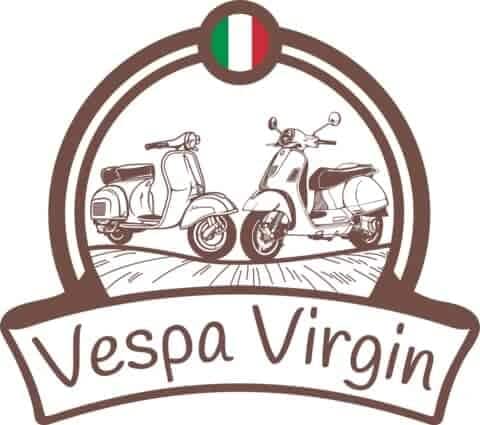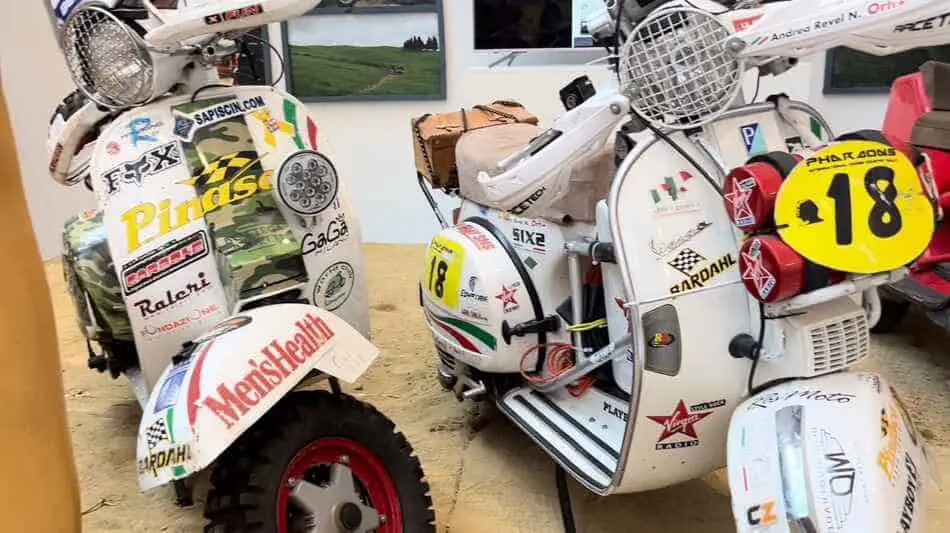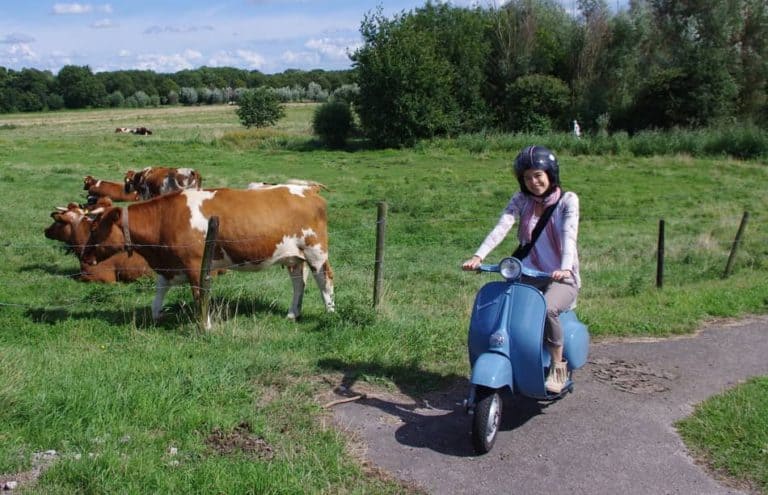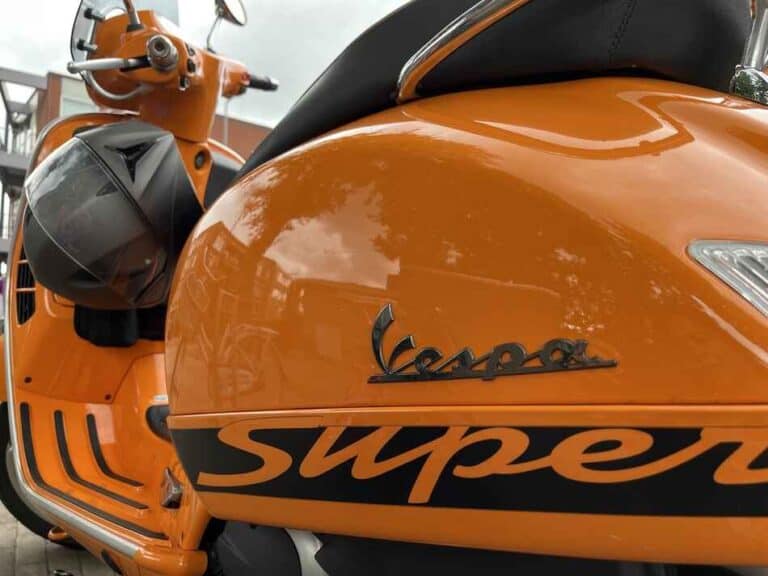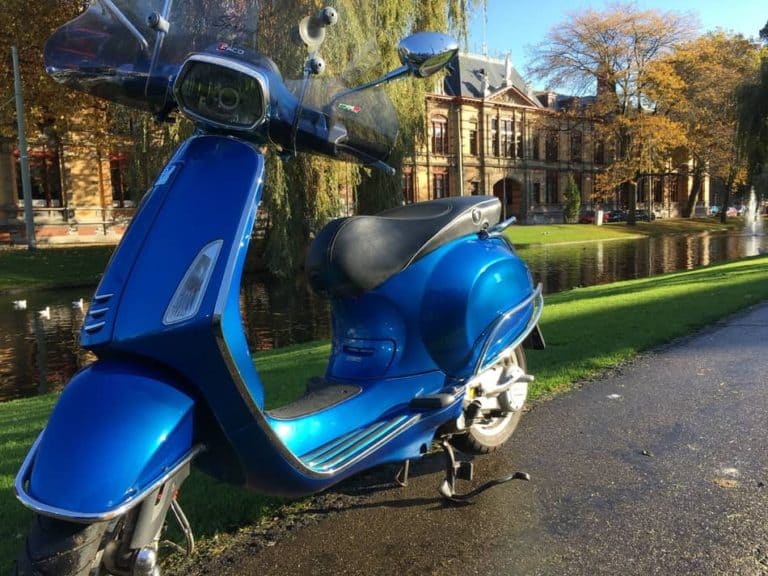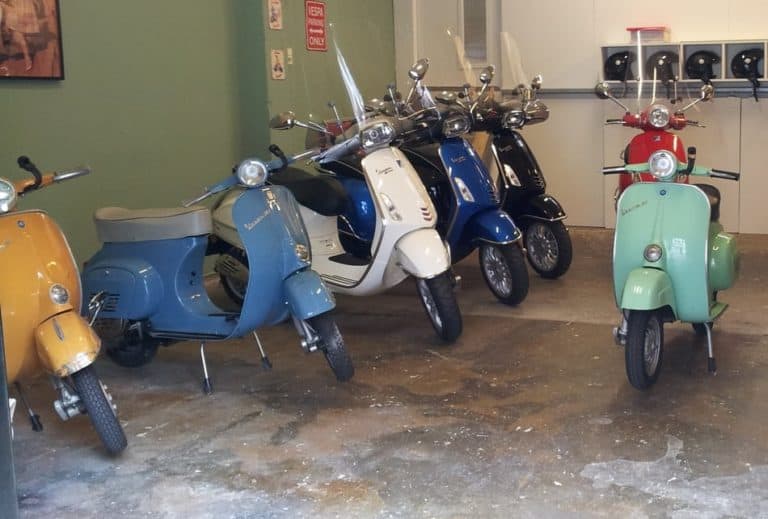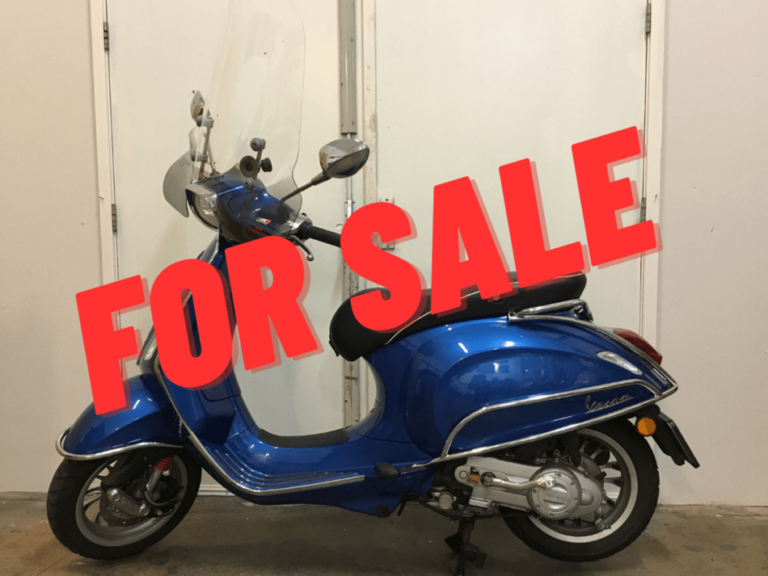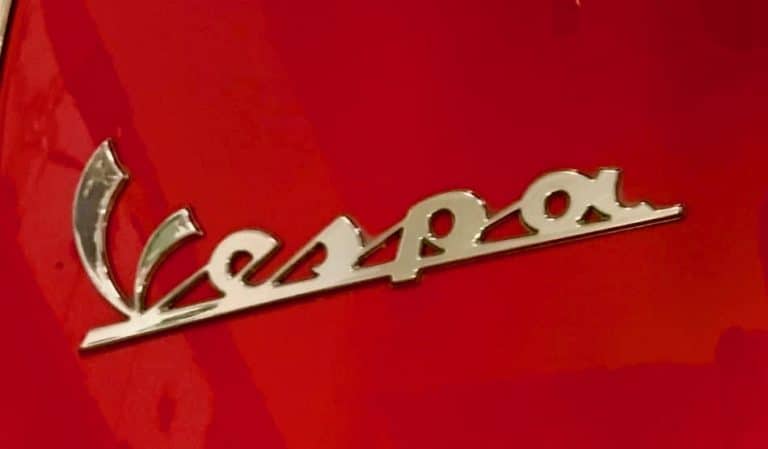Is Vespa Good For Off-Road? You Will Be Surprised
So I came across the Itchy Boots YouTube channel where a Dutch woman, Noraly, is riding solo around literally every corner of the world and tackling all sorts of road conditions on her adventure bike. This made me think. What about the Vespa? Is Vespa good for off-road terrain as well?
With some modification, classic 2-stroke Vespas do well off-road. There have been many occasions where Vespas competed in rallies and traveled around the world. The modern automatic Vespa isn’t made for rough terrain, but it can tackle an occasional drive on dirt and gravel roads.
But let’s be honest. If you compare a Vespa with adventure bikes (ADV), dirt bikes or even small pocket bikes, then the differences are more than obvious.
By just looking at the Vespa, the first thing you can conclude is that it isn’t meant for heavy off-roading. But don’t judge yet. Vespas scooters come in all shapes and sizes.
You will be surprised what a scooter that has been on the market for more than 70 years can do.
Taking Vespas to the limit on off-road racing
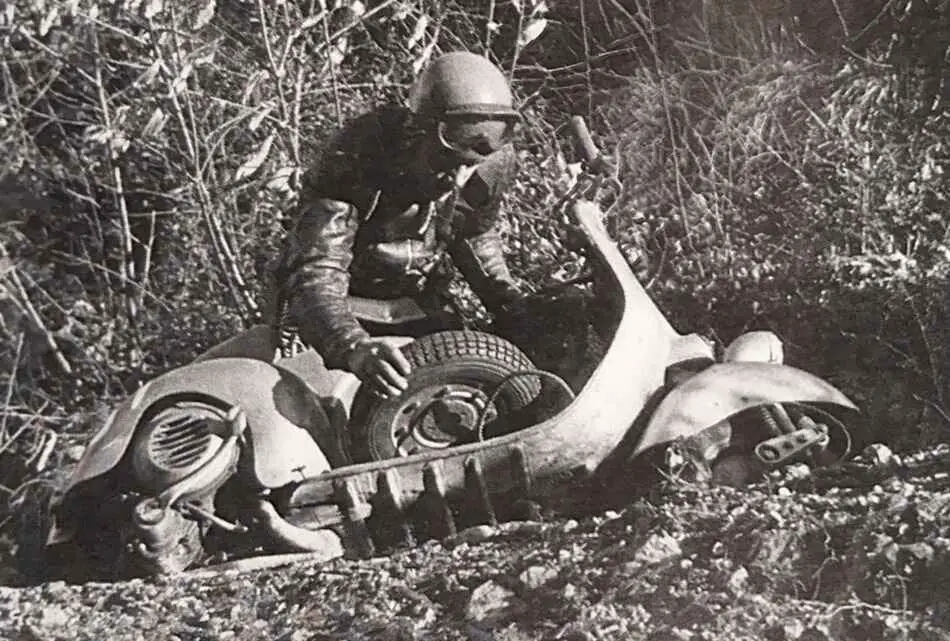
If you think about the first Vespas ever made in 1946, you can imagine that these classics had to tackle some rough riding through the Italian mountains and countryside.
So it comes as no surprise that many Italians started testing its limits. Soon after the very first Vespa came out in 1946, many riders successfully joined races and off-road events in Italy and abroad.
When participating with a Vespa in racing rallies was not considered for amateurs anymore, Piaggio even created the ‘Pontedera Racing Department’ in 1948.
The classic Vespa soon became known as a reliable and sturdy motorbike and was able to keep up at the most difficult races and terrain despite its small engine and tires.
The Famous Sei Giorni
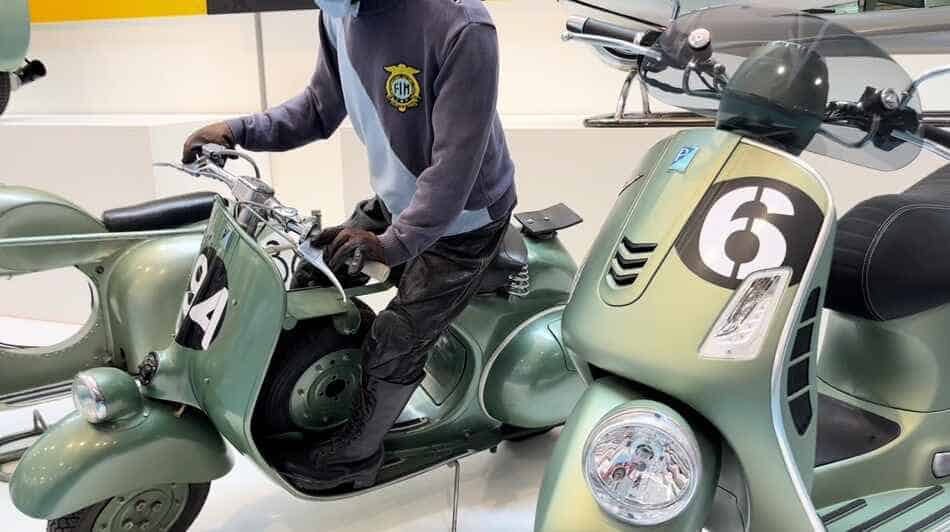
The most memorable and gruesome test was, however, the Sei Giorni Internazionale in 1951, where Piaggio tested their newest racing Vespa, known as the Sei Giorni (six days). Piaggio had placed an entire team to create the perfect Vespa for this race.
The Sei Giorni Vespa had the most updated engine with a top speed of 59mph/95kph; it had an aerodynamic leg shield, a second tank behind the saddle, and a second spare wheel on the foot platform, which was crucial for the rough terrain it was racing in.
From the 10 Vespa Sei Giorni’s that entered, 9 won medals. As you can imagine, this Vespa became a hit. Piaggio only produced 300 of this specific model, and until today, it is a high-sought collector’s item.
The technical features used on the Sei Giorni are found back in the 150 GS, which was produced in 1955. Many consider the 150 GS one of the most successful Vespas and is also a favourite among collectors.
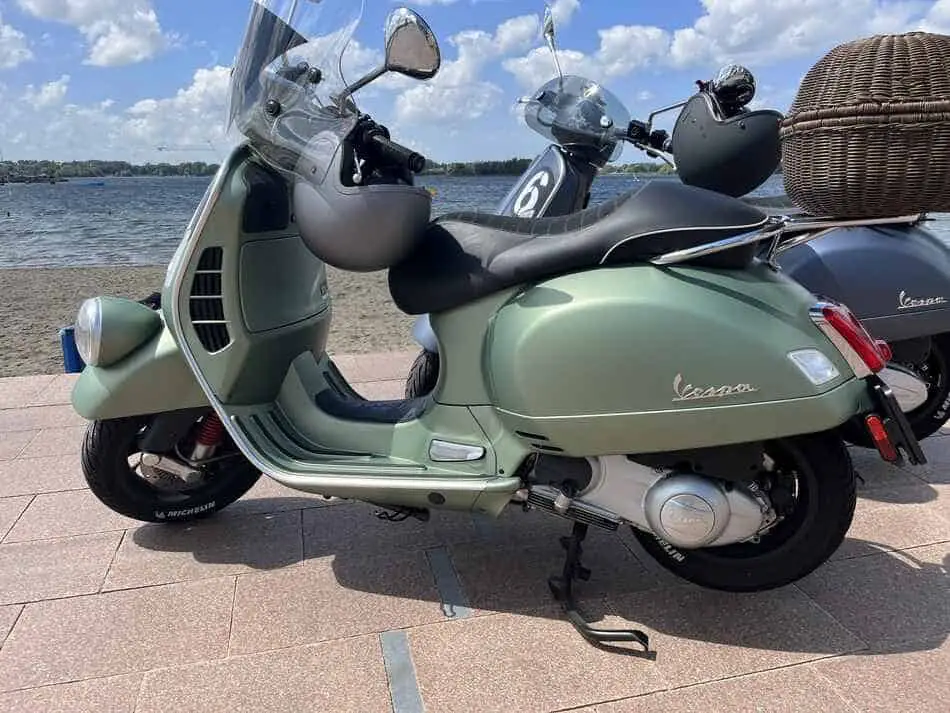
Classic Vespa off-road racing today
Today, the classic Vespas PX models are popular for off-road riding. These small motor scooters (made from 1977 until 1983) are now modified to participate in the so-called Vespa cross-racing. Online, you can find numerous stores selling parts to modify a PX model into a rough racing machine.
In 2020, the Italian “Tutto Mondo Racing” group participated in the off-road racing NORRA Mexican 1000 (as in 1000 miles) along the Baja Peninsula. The Vespas were equipped to withstand off-road conditions and came with skid plates, bigger tires, and modifications on the shock breakers.
Check out the interesting article where it explains how the Vespa was able to join the race.
These Vespas are hardly recognizable. But as you can see in the video below, the Vespa has been transformed into a strong off-road terrain vehicle.
How to make your Vespa an off-road vehicle?
Most off-road Vespa models are from the PX series. This was one of the latest and one of the most popular classic models in the 1980s. I think the PX is the best off-road scooter and is widely used because:
- It is one of the last Vespas with manual gears.
- It is still widely available everywhere in the world.
- The parts are widely available.
- It’s not that heavy.
- It has a sturdy metal frame that can withstand almost anything.
To modify the Vespa into an off-road vehicle, you do need to have the knowledge so the scooter can tackle uneven terrain effectively and safely.
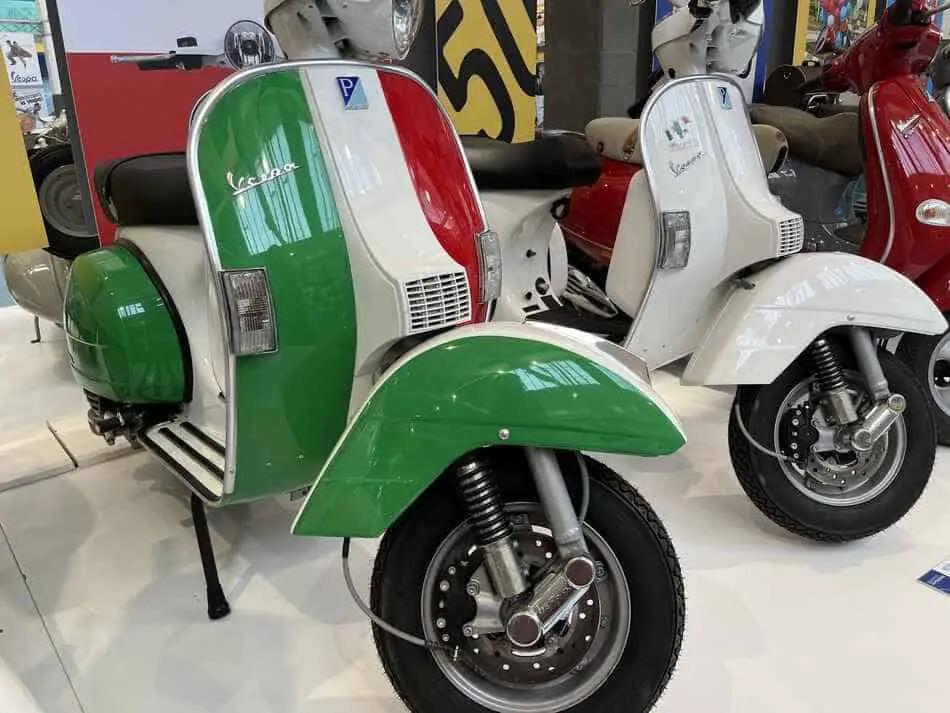
The modifications that are often conducted on the Vespa to improve its performance on rough surfaces are:
- sturdy tires for better traction control on loose surfaces like sand and dirt roads
- upgrading suspension to absorb bumps and better handling
- adding skid plates as an extra layer to protect the chassis from rocks
- place crash bars to protect the frame
- modifying the engine to increase power output
Vespas do not have large fuel tanks compared to vehicles specially made for off-road purposes. So, if planning to go long distances, it is vital to manage fuel consumption and perhaps install an extra tank.
While a modified Vespa will not be the best off-road scooter or motorcycle, with the necessary driving skills, they do come a long way. As mentioned, they participate successfully in rallies and adventure rides despite the difficult terrain.
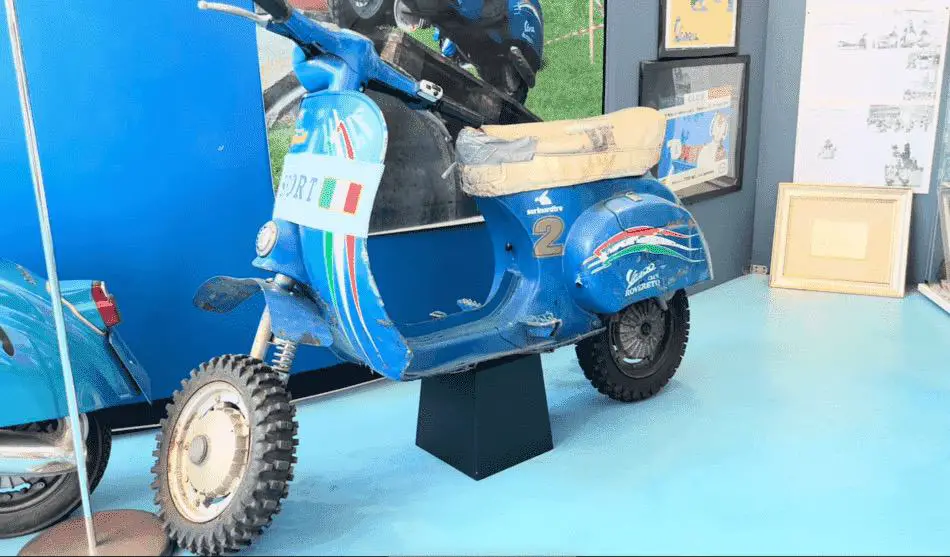
Gear-Up
While an experienced mechanic must do modifications, it is also important to note that the driver needs to take all necessary safety precautions.
- Wear proper off-road gear such as a full-face cross helmet, knee and elbow pads, plus sturdy boots.
- Start off with less challenging routes with inclines and obstacles to see how much your Vespa can handle.
Evaluating Vespa’s off-road performance
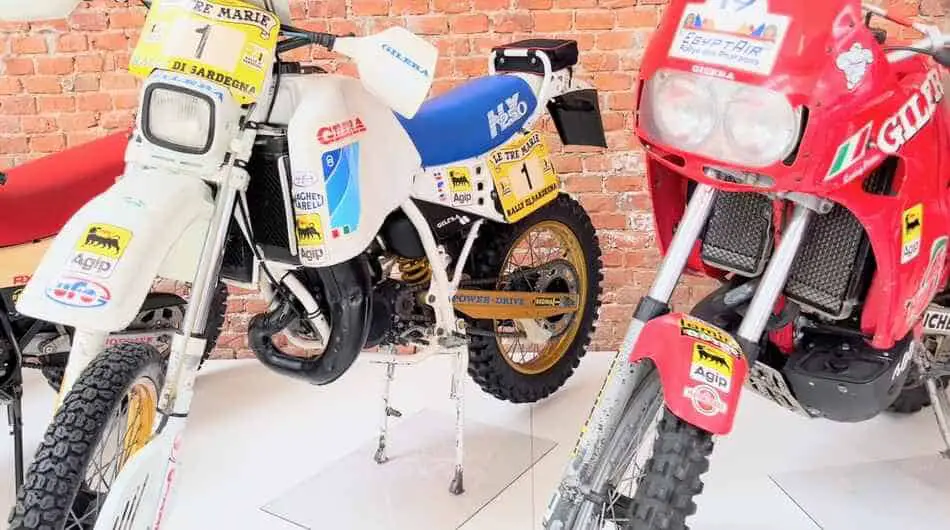
So, while the classic Vespas can be considered the best off-road scooters, how about the modern Vespa scooters?
As mentioned earlier, everybody can immediately see that there are hardly any similarities between common Vespa models and off-road motorcycles.
Let’s have a closer look at the differences:
Tires
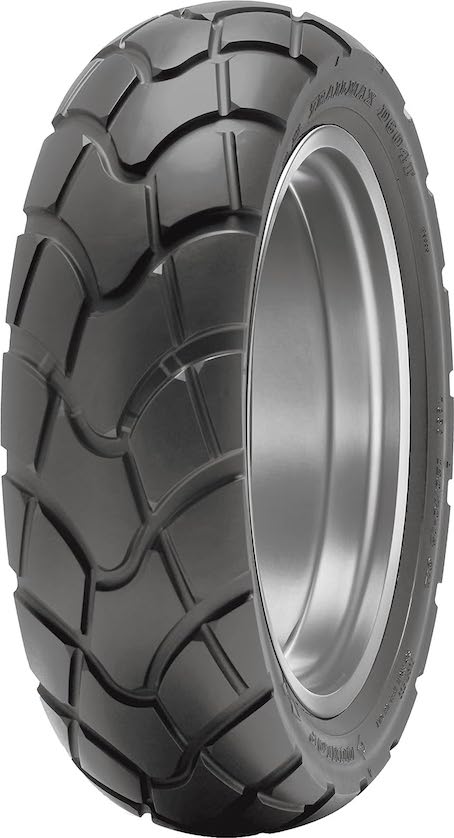
shop at Amazon
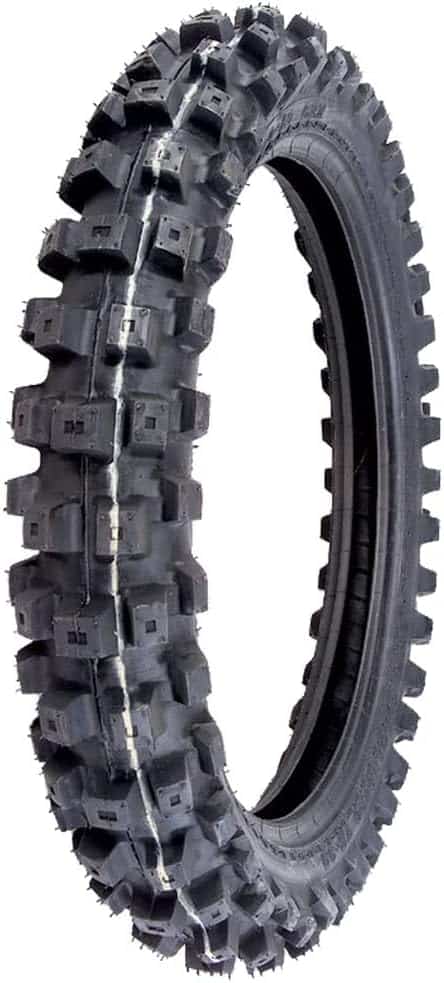
shop at Amazon
If you are not familiar with reading tire sizes then you should read them as:
tire width/aspect ratio of the tire profile–wheel diameter diameter in inches
The small-frame modern Vespa models such as the Vespa LX, Primavera and Sprint have a front tire size of 110/70-11 and a rear of 120/70-11. The tires of large-frame Vespa GTS are slightly higher: front 120/70-11 and rear 130/70-11.
As you can imagine, when it comes to adventure bikes (also known as ADV motorcycles) or dirt bikes, their tires come in all sizes. Their front wheel is also often bigger and narrower in order to handle more shock absorption and control, while their rear wheel is wider and smaller. This is to create more traction and be able to accelerate more.
So, what are the sizes of these off-road bikes in general? You will soon see sizes such as 140/80-18 and 90/90-21. There are tires in 11-inch sizes, but these are for kids’ dirt bikes.
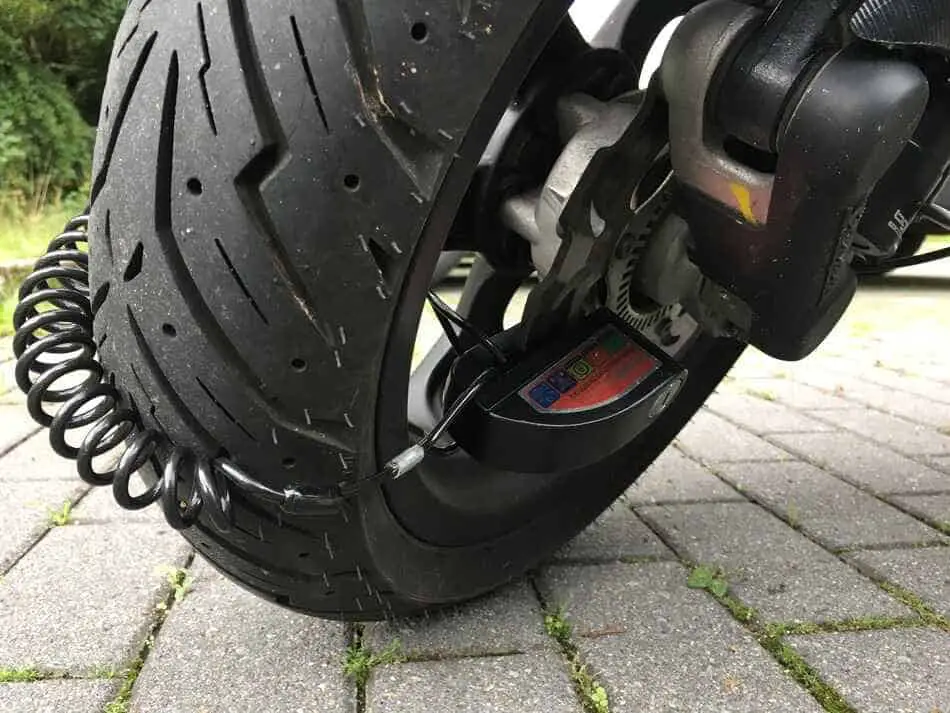
With its much smaller tires, the modern Vespa will have a hard time maintaining stability and control in such terrain.
Additionally, the tire profile is also totally different. Modern Vespas come in tires with hardly any profile. Whereas off-road motorcycles have tires with a deep profile, creating more grip and stability when tackling rocks, debris and small boulders.
Manual vs Automatic
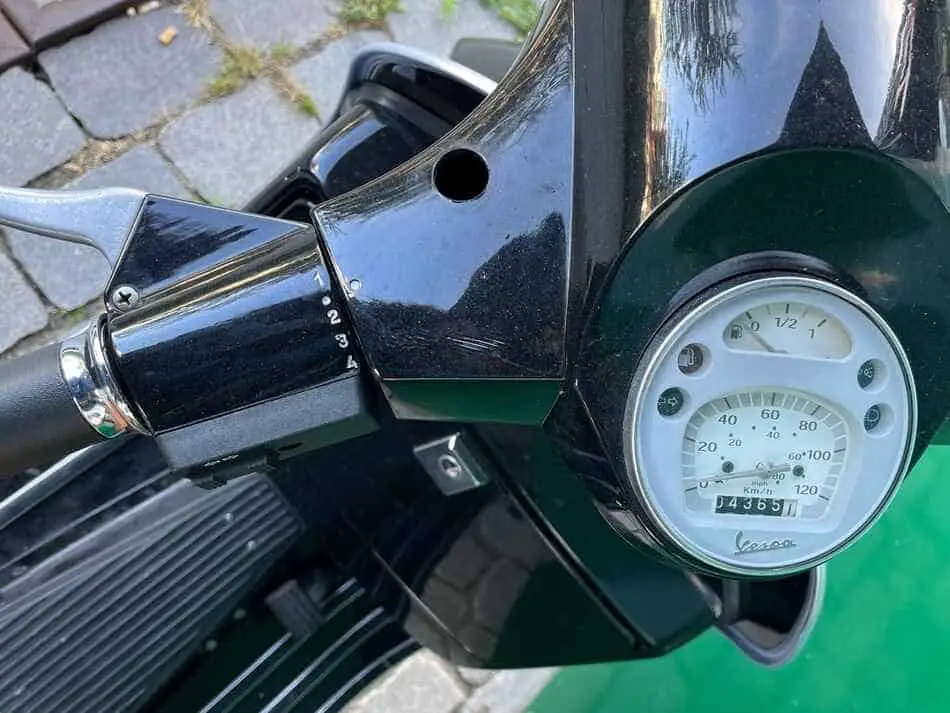
Most popular ADV motorcycles have manual gears, enabling them to get more torque power at a lower RPM when switching into the desired gears.
All modern Vespas are automatic. You can gain very high speed and power with an automatic, but once you hit a rocky terrain that might even go slightly uphill, you don’t have a lot of options.
All you can do is decrease the speed so you can maneuver better through the dirt road, but then you might lose momentum. Or you choose to gain speed, which will likely result in losing control of the bike.
You will never get the correct boost with a modern Vespa, even going full throttle, compared to a manual classic Vespa or another ADV brand.
Suspensions
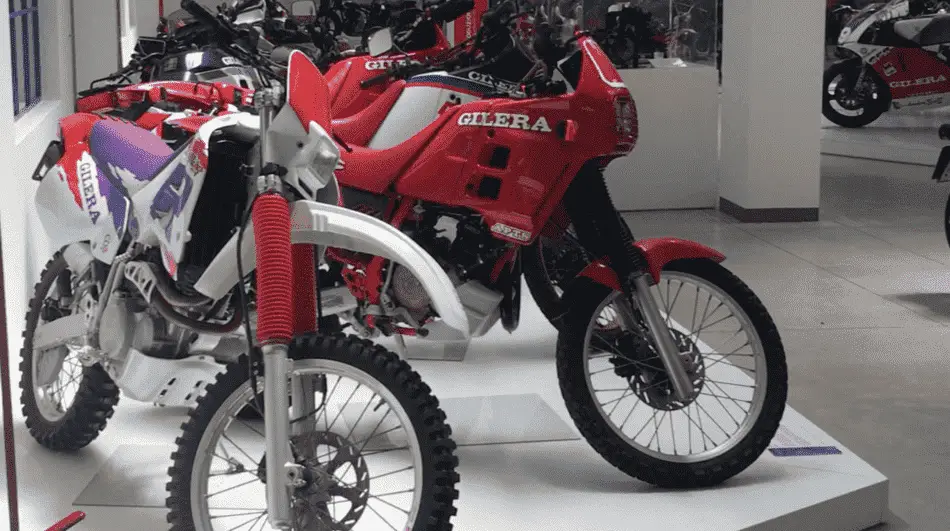
Suspensions are an important part of road riding as they ensure that the wheel remains in contact with the ground. To prevent losing traction, the tire must be able to follow the depth of the terrain while leaving the bike behind. In this case, the front suspension is crucial as it is able to absorb the impacts so the rider will not lose control over the bike.
Adventure bikes have a far better suspension system, such as the Honda African Twin, KTM, Ducati Multistrada, BMW GS series.
As you can imagine, the standard suspension of a modern Vespa is perfect for city and urban riding. The GTS 300 is known to have stiff suspensions. You can lower the preload of the suspension for a softer ride, but this will not be sufficient to tackle the big bumps.
Malossi and Bitubo are both great brands for Vespa suspension high-performance upgrades. They will get you a long way when driving on uneven roads.
Height/Ground clearance
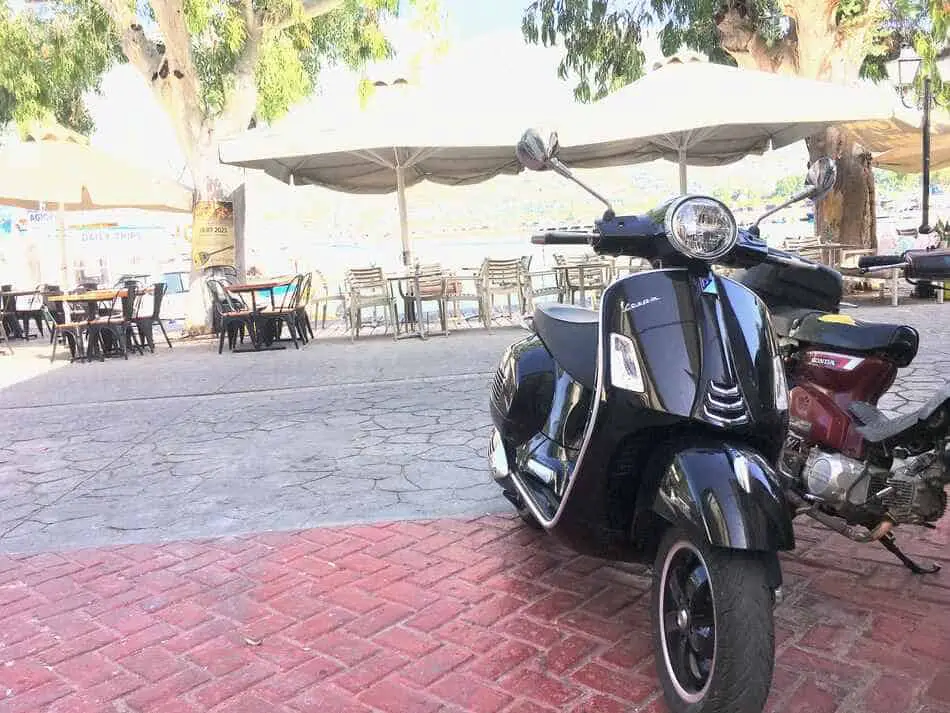
The small wheels plus the low ground clearance make the Vespa prone to damage when driving through rough terrain. The undercarriage of the floorboard will dent and scratch in no time.
A dirt bike or ADV motorcycle is much higher, enabling them to navigate more easily through rocky or muddy terrain without getting stuck.
However, in the end, especially when going off-road, it is important that the bike isn’t too high. If you are a beginner driver, then it is wise to get a small size that fits your height.
The Vespa is small, but it is easy to place your feet on the ground when necessary. An advantage of being smaller compared to an ADV.
Engine size
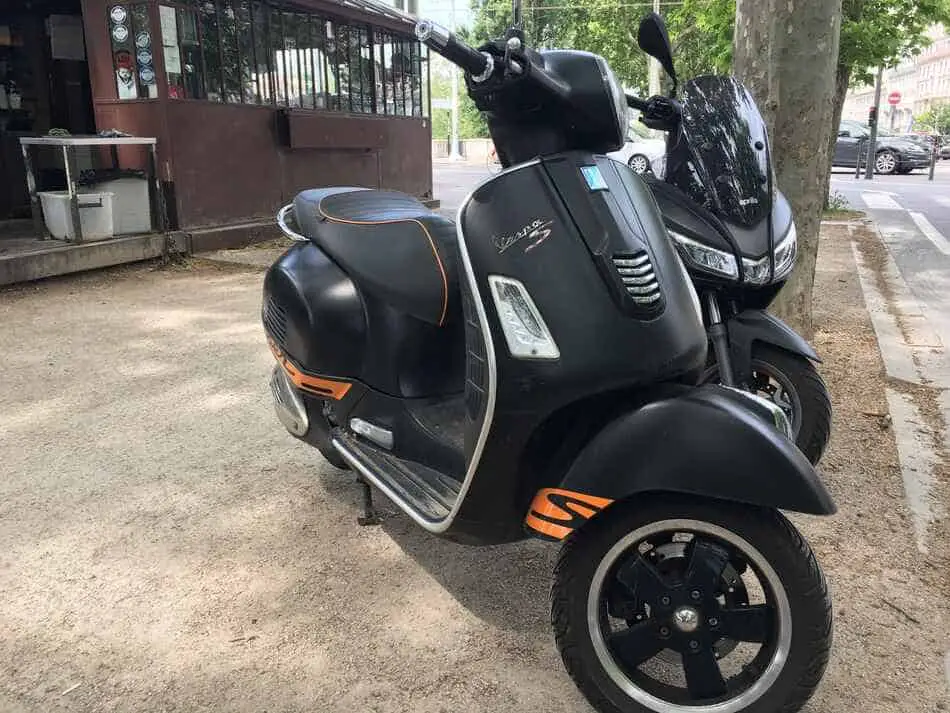
The biggest engine displacement for a GTS is 300 cc. Dirtbikes have similar engine sizes, but if you look at ADV motorcycles, then you can find them in 600 cc models or higher.
The differences in engine size between a Vespa and an ADV bike are huge. While the Vespa (especially the newest GTS Super) is good for long distances, the large engine of an ADV bike is built for long distances plus off road use. These bikes are touring motorcycles.
Unlike the dirt bike, an adventure (ADV) motorcycle is street legal, ideal for long-distance riding and is built to tackle off-road conditions. It is a popular type of bike because of its multi-purpose use
Handlebar
Off-road purpose motorbikes have a wider handlebar than a Vespa. Some say that a wider handlebar creates more stability, plus you can place your weight on it more easily when riding.
Just comparing the handlebars of a dirtbike with that of a Vespa, you can’t picture yourself standing upright and leaning on the handlebar. The Vespa handlebars are narrow, making it easier to navigate along tiny streets.
How well will the Vespa GTS do off-road?
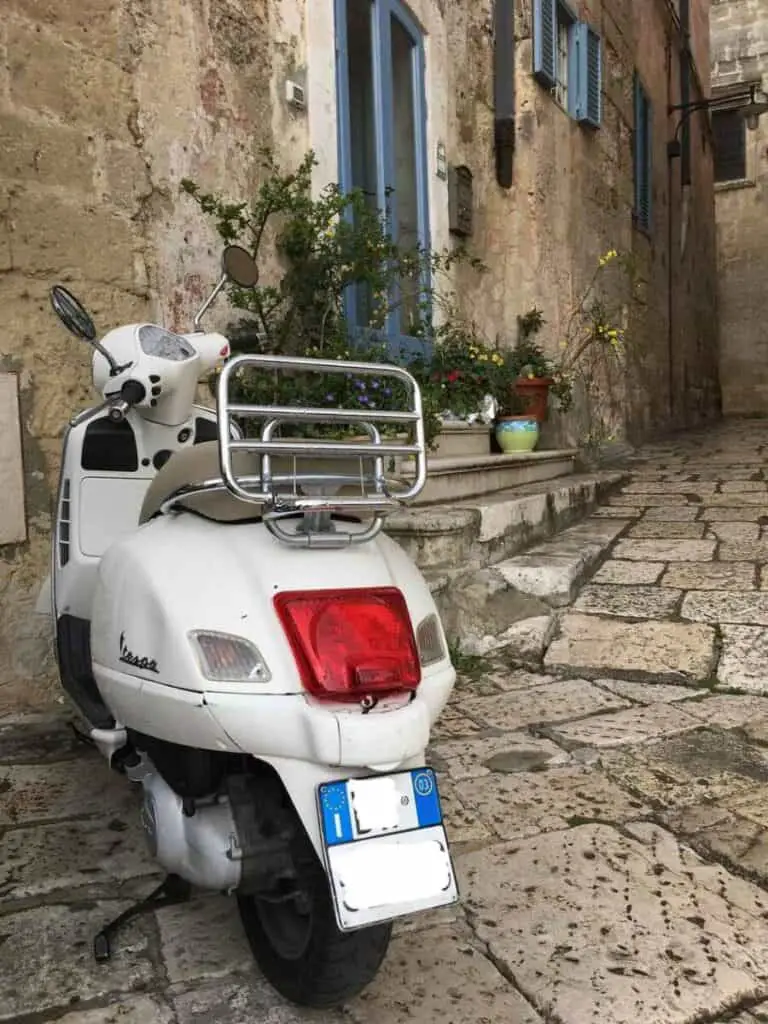
The Vespa GTS is designed for city and urban commuting. It can perform at its best on a nice smooth surface, enabling you to comfortably enjoy riding long road trips, while at the same it is compact enough to maneuver through the city streets easily.
But, if you do want to give a Vespa GTS a go on an off-road terrain, then why not? Naturally, you can not keep up with an ADV motorcycle. However, getting off the main roads and heading towards the smaller roads with a bit of gravel should be possible.
If the latter is something you like a lot, then there are a couple of things you can do to make your GTS a bit safer and more comfortable for you when tackling uneven roads:
- Replace the original suspensions with higher-performance ones. The GTS is generally known for its stiff suspensions, so changing them is always a good option.
- Get more knobby tires for more grip.
- Place a skid plate to avoid getting the Vespa body damaged by rocks and debris.
- Switch off the traction control system on the GTS Vespa model from 2018 and newer. Traction control is good for slippery roads. On dirt roads, you would want to increase the traction in the rear wheel.
Skills Matter
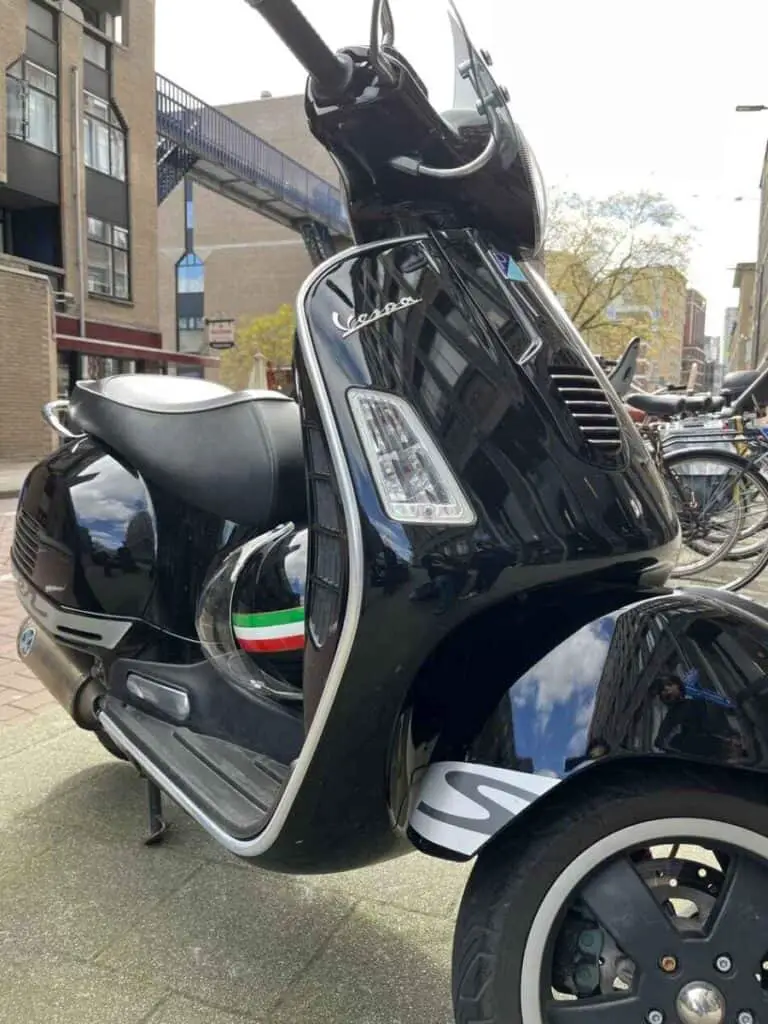
While you can do plenty of things to modify your GTS, in the end, it also all depends on the skills of the driver. You must be able to handle uneven terrains and avoid getting stuck in the mud and losing grip. Off-road riding is something totally different from driving on tarmac roads.
Don’t expect to participate in off-road rallies or cross along challenging off-road trails with your Vespa GTS.
If you really want to do that with a Vespa, then you should really consider checking out the PX models. It has been proven that these are the best off-road scooters, and it is becoming more popular and appreciated.
Additionally, even after all the many modifications, a Vespa GTS will never be as good as a purpose-built off-road vehicle. It would be better to look for a motorcycle that is specifically designed for off-road terrain in mind.
A great off-road motorcycle or additional modifications will help you in off-road challenges, but in the end it all comes down to skills
Our own experience driving off-road on a scooter.
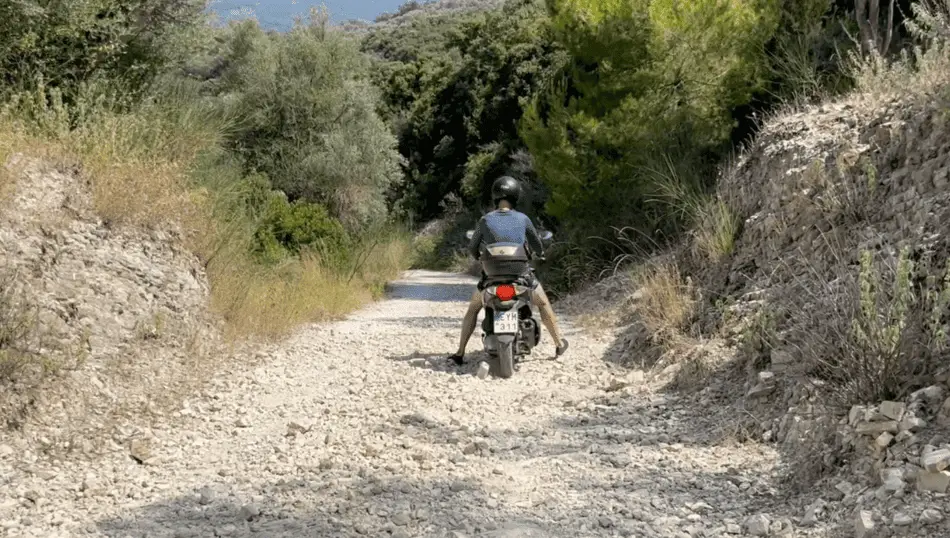
We experienced rough terrain when we were touring through Lefkada Island. Unfortunately, we were not able to rent a Vespa there, but we did get a 125cc Sym Symphony scooter. It did well on gravel, but I did fall a couple of times.
First, when we were driving through soft sand at the beach, I just lost control and fell to the side.
Secondly, when we were heading downhill towards a beach. The road was unpaved, uneven, and had lots of loose rocks. Every time I hit the brakes, I felt like the rear wheel just wanted to slide past me. I didn’t have any sense of control and had to put my feet as low as possible to the ground to stabilize myself.
Obviously, the bike was very inappropriate for this road. But Matt was able to help me drive up and down the difficult parts, so in the end, skills did matter a lot.
A Vespa GTS is not made for off-road conditions.
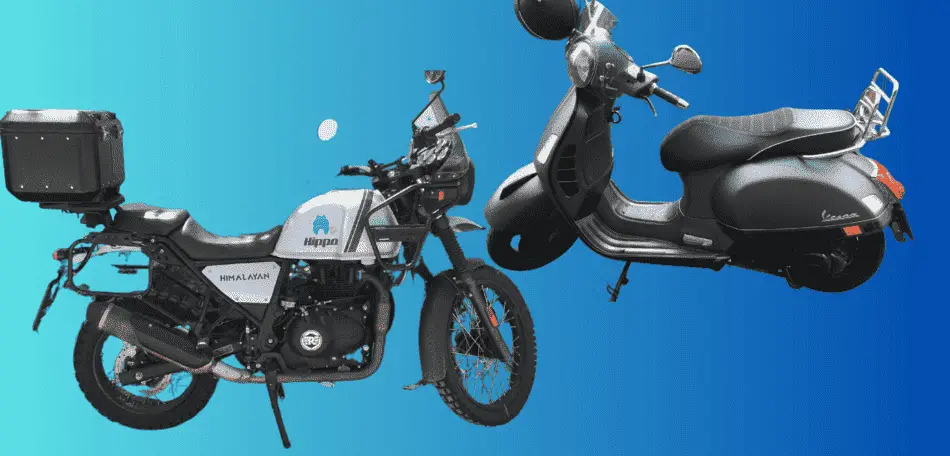
Even if you modify a GTS to make it more capable on rugged terrain, it still won’t cut it for serious off-road use. It simply isn’t the ideal Vespa scooter for tackling rough terrain.
And besides, if you look at the latest Vespas with their improved engine and additional features, it is a shame not to fully enjoy the potential they are actually built for. These bikes are top-notch and meant to hit their maximum speed and perform at their best on smooth roads.
In contrast, motorcycles like the Suzuki DR, Husqvarna Norden or Triumph Tiger are tailored for off-road adventures, whereas Vespas are not. Adventure bikes, for example, are equipped with various accessories such as handguards, off-road mirrors, and headlight protectors.
There’s a huge difference in design and purpose when comparing the latest Vespa scooters with dirt bikes and ADV motorcycles.
It’s something you should accept and not test the limits of a Vespa too much or push too hard, even if you’ve taken all the precautions and done the modifications. This isn’t just about keeping your beloved Vespa in one piece; it’s also about minimizing your own risk.
In my opinion, I think it’s actually a good thing that Piaggio has focused on improving their city-style scooters only. After all, they have been creating the most popular scooters since the 1960’s. So why change it?
More articles to read:
What Vespa Should I Buy? Tips On Deciding Which Vespa Fits Your Needs
